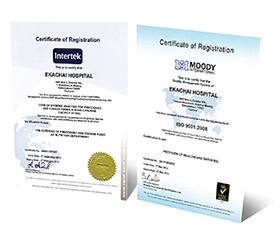Gastric sleeve surgery (vertical sleeve gastrectomy) removes about 80% of the stomach. As a result, patients:
• Feel less hungry
• Feel full sooner after eating
• Lose up to 3/4 of their excess weight
• Improve or cure their obesity-related health problems

Weight Loss: Half to Most of Your Excess Weight
Weight loss happens fast after gastric sleeve surgery:
• Month 3: About 1/3 of excess weight is gone
• Month 6: About half of excess weight is gone
• Month 12: Up to 70% of excess weight is gone
Most patients reach a plateau around the one to two year mark. Patients who eat and exercise right are usually able to keep the weight off or lose even more.
But many patients let their dedication slip and regain some weight. This is due to the stomach stretching over time, which is usually caused by overeating.
By 5 years after surgery, the average patient has kept off over half of their excess weight. Successful patients avoid weight regain by:
• Working closely with their surgeon’s dietitian or nutritionist
• Using a personal trainer
• Attending in-person or online support groups at least twice per month
• Keeping a food journal
• Having the support of family and friends
• Maintaining motivation and dedication

Qualify: 35+ BMI with Health Issues, 40+ Without
You could be a good candidate for gastric sleeve surgery if:
• You have a body mass index (BMI) of 40 or more, OR
• Your BMI is between 35 and 39.9 and you have a serious obesity-related health problem
Serious obesity-related health problems most commonly include:
• High blood pressure
• High cholesterol
• Type 2 diabetes
• Sleep apnea
• Many others
Procedure: Laparoscopic, Makes Stomach 80+% Smaller
Why Gastric Sleeve Works
• Reduced stomach size makes the patient feel full sooner after eating
• Removed portion of the stomach means fewer hunger-causing hormones are secreted, causing patient to feel less hungry generally
Preparing for Surgery
Your surgeon will work closely with you during the weeks leading up to surgery, including:
• Health assessment, including questions about your medical history, medications, and surgical history
• Order certain tests like an ECG, x-ray, and blood tests
• Establish a pre-surgery diet regimen, including:
• 2 Weeks Before
• No sugar
• Lower carbs
• Increased protein
• Increased veggies
• Plenty of fluids
• 2 Days Before
• Clear liquids, broth, one protein shake per day only
• Talk with your surgeon about whether you should stop taking any medications
• 12 Hours Before
• No food or drink, no tobacco
Your other big goal before surgery: lose as much weight as possible.
Here’s why:
• The more weight you lose pre-op, the more weight you will lose after surgery
• The lower your pre-op weight, the lower your risk of complications
• You will regain weight if you slip into old habits. The sooner you can establish good diet and exercise habits, the more likely you will be to maintain them after surgery
How Gastric Sleeve Is Performed
Before surgery, you’ll perform the typical pre-surgery routine:
1. Remove all clothes and jewelry
2. Put on your hospital gown
3. Meet with your nurse and anesthesiologist
4. Start your IV
5. Receive medication for relaxation and sleep
During surgery, your surgeon will remove about 80% of your stomach. This leaves a banana-shaped “sleeve” that connects the esophagus to the small intestines. [Some surgeons will then reinforce the staple line.]
Your much smaller stomach will cause you feel full sooner and result in long-term weight loss. It is done laparoscopically in one to two hours.
The gastric sleeve procedure is done for patients of all ages, from children to the elderly.
Recovery: 2 – 3 Days in Hospital, Back to Work in 2 Weeks, 4 – 6 Weeks to Full Recovery
Gastric sleeve patients usually stay in the hospital for two or three days. Full recovery happens within 6 weeks.
Here’s what to expect:
1. Wake Up: When you first wake up, you’ll be sore and a little “out of it.” You’ll be on medication to control the pain.
2. Move Around: Your surgeon will have you up and walking around as soon as possible after you wake up. This will reduce the risk of blood clots and jump-start your body’s healing process. Continue to walk as much as possible, increasing it a little each day.
3. Get Released: Before releasing you, your surgical team will run some tests to ensure :
a. You are able to drink enough to stay hydrated
b. You can urinate normally after removing your catheter
c. You have adequate pain relief from your pain medications
4. Look for Warning Signs: Contact your surgeon if you experience any of the following:
a. Difficulty swallowing
b. Fever
c. Signs of incision infection (pus, swelling, heat, or redness)
d. Ongoing nausea or vomiting
e. No improvement or worsening of pain
5. Transition Your Diet: Your smaller stomach will be sensitive, especially at first. You’ll start on a liquid diet and slowly transition back to solid foods (read more about this in the Diet section of this page). You may feel tired while your body gets used to less food.
6. Ease Off Medications: Your surgeon will prescribe pain and digestion medication as needed. He may also adjust your pre-surgery medications until you’re fully healed. Follow their instructions to the letter.
7. Return to Your “New Normal” Life: Avoid swimming or bathing until your incisions have fully healed. Many patients return to normal life and work within a couple of weeks, but plan for up to 4 to 6 weeks off to be on the safe side. Full exercise and heavy lifting should resume within one to two months.
8. Have Follow-Up Visits During First Year:Follow-ups with your surgeon’s team will happen about one week post-op, then 4 weeks post-op, then every 3 or 4 months to ensure that everything is on track, including:
a. Discuss weight loss
b. Encourage regular exercise
c. Obtain lab work and make necessary adjustments to medications and dietary supplements
d. Understand diet and identify any potential eating disorders
e. Determine whether any potential complications may be arising
f. Track status of obesity-related health issues
g. Involve your family physician to help evaluate progress and ensure a successful transition
9. Transition to Semi-Annual or Yearly Follow-Up Visits – After you’ve reached your “low point” weight, your surgeon will probably still want to see you at least once per year (28). During those visits you may meet with several team members, including your surgeon, dietitian, and mental health care provider. They will probably request lab work to ensure that vitamin levels and other indicators are where they should be. If you experience any issues in between visits, don’t wait for your next visit… call your doctor right away.
Downsides: Risk of Complications, Side Effects, & Weight Regain
The relatively simple gastric sleeve procedure results in a very high survival rate (99.7%, or 319 out of 320 patients).
But it does carry a risk of complications, side effects, and other challenges, some of which can be prevented.
Preventing Gastric Sleeve Complications
The patient is often to blame for complications as a result of not following their doctor’s instructions.
Behaviors that will dramatically reduce your risk of gastric sleeve complications:
• Pick a good surgeon
• Follow your surgical team’s advice to the letter
• Educate yourself
• Educate your family
• Lose as much weight as possible prior to surgery
• Eat a healthy diet in the months leading up to surgery
• Get tested for sleep apnea syndrome several weeks before surgery (and address the issue if it exists before moving forward)
• Plan for at least 2 weeks of recovery time
• Exercise right away after surgery, but take it easy at first.
• Compression stockings
• Pneumatic compression devices
• Blood thinners after surgery
Have an effective support system of friends, family, and weight loss surgery support groups
Serious Gastric Sleeve Complications
The three most common serious complications associated with gastric sleeve surgery are:
• Staple line leaks – 2.1% of patients on average (between 1.09% and 4.66%, depending on the study) experience staple line leaks
• Bleeding – 1.2% of patients
• Stenosis/Strictures – 0.6% of patients
The staple line leak rate studies were done with less effective surgical techniques. Newer techniques may result in lower risks.
Blood clots are a concern with any surgery. Your surgeon will take steps to reduce the risk, including blood thinners and the use of compression stockings after surgery. They will also have you up and moving as soon as possible after surgery.
Gastric Sleeve Side Effects: Digestion & Sagging Skin
Digestion Issues
About 1 in every 5 patients experience Gastroesophageal reflux disease (GERD) in the first 12 months. The good news is that this tends to be a shorter-term issue. After 3 years, the GERD rate drops to around 3%.
Other potential gastric sleeve side effects include:
• Indigestion (Dyspepsia)
• Gallstones
• Intolerance to certain foods
• Nausea and vomiting
• Vitamin and mineral deficiency
Sagging Skin
For most obese patients, the skin has been stretched out for so long to accommodate the extra weight that it has lost its elasticity. Gastric sleeve surgery causes most patients to lose a lot of weight very quickly, and your skin simply can’t keep up.
The extra skin may be embarrassing. It can also cause several issues ranging from minor to severe, including:
• Difficulty getting dressed
• Difficulty exercising, which may impact long-term weight maintenance and health
• Skin fold rashes or breakdown of skin
• Skin fold infections
In some cases, patients manage sagging skin with body-contouring undergarments. In more serious cases, patients have plastic surgery to remove the excess skin. Surgery to remove excess skin is often covered by insurance.
Weight Regain
After two years, about 1 out of 20 gastric sleeve patients have gained back some weight from their low point. That number increases to 3 out of every 4 patients after 6 years.
Long-term, the average gastric sleeve patient regains about 25% of the weight they lost.
Just as bad, the more weight you gain back, the more likely your health problems are to return. For example, one gastric sleeve study found this difference in Type 2 diabetes remission:
• Year 1: 56% of patients
• Year 5: 20% of patients
This return of Type 2 diabetes happened for patients who gained back weight.
The reason for weight regain?
Most patients who regain weight do so for one or both of the following reasons:
• They consume calories in liquid form, such as protein shakes, pureed foods, smoothies, etc. As reviewed in the Diet section above, your new sleeve stomach works by making you feel full sooner. Since liquids don’t make you feel as full as solid foods, you’ll eat more and gain weight if you get your calories from liquids instead of solids.
• They “slip” in their dedication and start to overeat or eat the wrong things. This can stretch out their smaller stomachs.
Remember, gastric sleeve is one of the best tools for weight loss, but it is only a tool. To avoid weight regain, eat the right foods and make the right lifestyle choices.
Credit: http://www.bariatric-surgery-source.com/gastric-sleeve-surgery.html
Credit: https://cmibs.com/gastric-sleeve-8-things-to-know/







